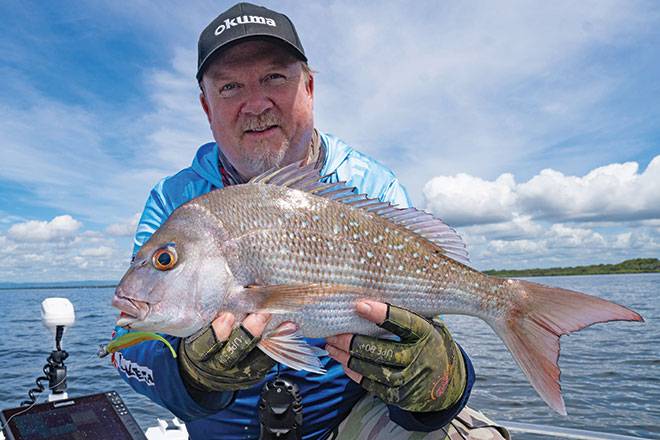A lot of anglers start their soft plastics fishing journey chasing bread and butter species such as bream and flathead, with the perception that snapper are a more exotic species reserved for anglers with big boats travelling long distances.
This is not the case.
Over the years, improvements in fishing tackle, electronics and watercraft have seen small boats and even kayak anglers getting stuck into larger numbers of snapper, including quality fish in the 60-80cm class.
Let’s take a quick look at where to locate these fish and the gear and techniques that will get you hooked up.
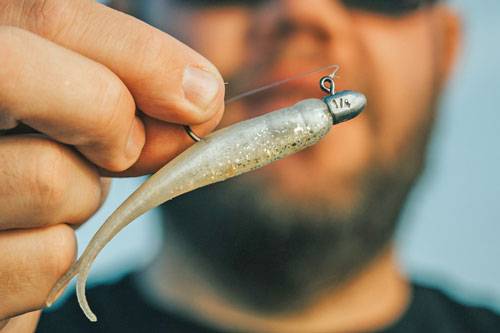
Where to fish
Snapper favour deeper water and love structure, so these are two starting points to use to locate them in your local river, estuary or bay.
Don’t get me wrong, you will catch snapper in shallower water, and this is how I first started catching a few, however I soon realised that the shallows I caught them from had weed and rubble to attract fish onto them and they were also in close proximity to deeper water.
Once I realised this, I began to move off the flats into deeper water and soon located ledges, drop-offs and structure in the deeper sections of my local waterways in 3-6m of water that held large schools of bait and numbers of snapper.
This was all from a kayak using a basic sounder and, over the next few years, I explored more areas and began to crack a pattern, landing more and larger fish.
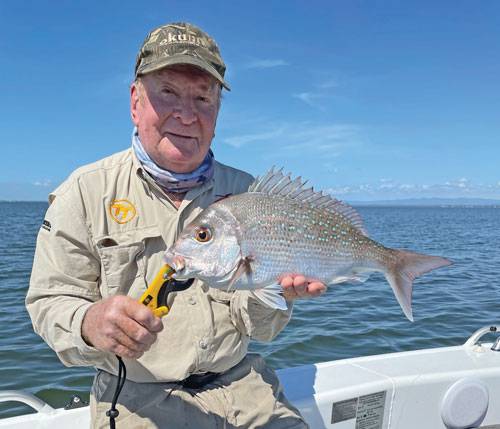
When anglers head wide offshore in search of snapper, they are looking for structure such as ledges, pinnacles, reef, wrecks and rubble, while also paying attention to the structure that is holding bait and fish.
In the river and estuary, we are looking for the same things but generally on a smaller scale, so a single rock or tiny patch of rubble in deeper water can be enough to hold fish.
Don’t forget available man-made structure, such as rock walls, bridge pylons and wrecks created to attract fish also.
When to fish
From my experience, snapper will bite year-round, with numbers and sizes increasing throughout the cooler months because of an influx of larger bait in the systems.
As with many species, peak bite times are dawn and dusk, however the tide seems to play a more important role.
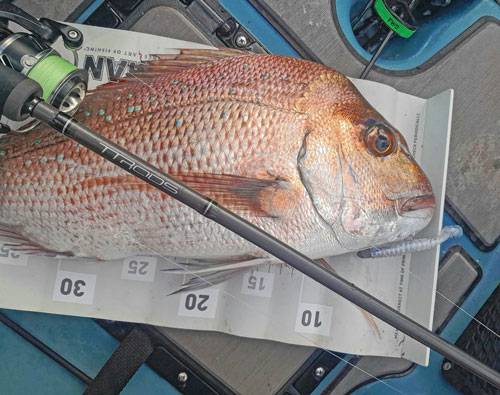
As we are fishing deeper sections of water, the tidal flow can be heavier and fish will hold out of the flow until the current slows around the tide changes.
A couple of hours either side of the tide change will see the flow ease, the fish move out from cover to scout around and feed more, while also giving us the opportunity to present our lightly weighted soft plastics more realistically and effectively.
Moon phases also play an important role and I have found that the fish feed best a few days prior to a full or new moon, with the day of and the day after the moon commonly a tough bite.
There’s an old saying though, ‘fish are where you find them’, and if these factors don’t line up with the fishing time you have available, get out there anyway because fishing can be unpredictable at times and you’re not going to catch them at home.
Combo selection
The bulk of the fish we’re catching range from undersize through to 55cm, so I prefer to fish light with a 7’ 2-4kg or 3-6kg rod paired with a 2500 size spin reel loaded with 10lb braid and a 10-15lb leader.
You can up or downsize your gear based on the average size of the fish and the type of structure you’re fishing.

Plastics and jig heads
Though you will catch inshore snapper on larger 5” and even 7” soft plastics, in my local southeast Queensland area I’ve had the most success fishing smaller 2.5” to 4” plastics.
Often the bait are small, so in turn the fish are zoned in on smaller prey.
If you find the bait are larger, then upsize, however we have caught plenty of 50-60cm fish on smaller plastics and this would be my starting point.
These smaller plastics will also keep you busy, with plenty of by-catch such as bream, grunter, flathead, tailor and a mix of trevally species that also like to hold around structure.
If you want to hedge your bets in terms of species, it’s hard to go past 2.5” soft plastics, with my go-to being Z-Man ST GrubZ, Slim SwimZ and PrawnZ.
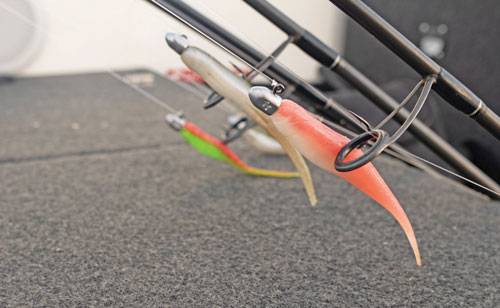
These are all bite-sized snacks and I fish them on a size 1 or 1/0 jig head.
Snapper are jig head destroying species, with their strong teeth, powerful jaws and aggressive battles around structure.
The TT HeadlockZ HD jig head is my go-to for snapper because it is built on a brutally strong Mustad black nickel chemically sharpened hook.
I will fish the PrawnZ if prawns are currently active in the system, Slim SwimZ paddle tail if I want to fish faster and the ST GrubZ curl tail if I want to slow things down.
It’s worth mixing your presentations up to find what the fish want on the day, while also sussing out by-catch species that may be in the area.
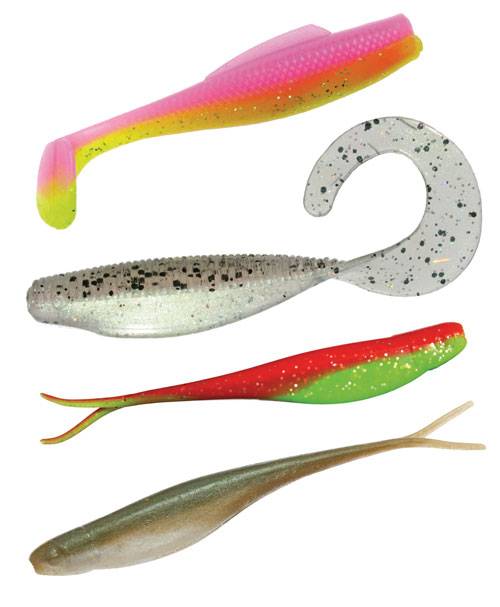
Because snapper are notorious for eating the presentation on the drop, pay attention as the plastic sinks.
If it doesn’t get eaten on the drop, allow the plastic to pause briefly on the bottom before giving it a few twitches and hops, repeating this action then pausing to replicate injured or dying prey.
With the natural buoyancy of the Z-Man ElaZtech plastic, fish will often pick the plastic up off the bottom, so if you feel a bite while paused, set the hook.
If you want to avoid some of the smaller species and focus on larger snapper, then upsizing your presentation is an option.
A couple of favourites in the next size range include Z-Man 3” MinnowZ and 4” StreakZ Curly TailZ, both of which are still a bite-size profile but are more attractive to larger predators and anglers chasing snapper, flathead, jewfish, trevally and more.
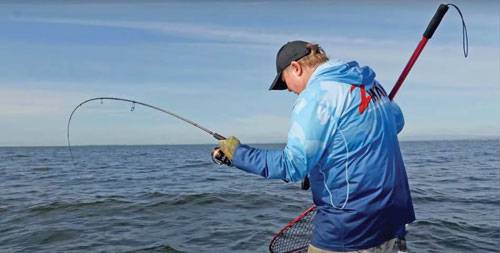
These are rigged on a 3/0 TT HeadlockZ HD jig head and, as with the smaller plastics, I will commonly carry a selection of 1/8oz, 1/6oz and 1/4oz jig heads.
This is generally enough weight to get down in the 3-6m depths that I fish, especially around the slacker stages of the tide.
A couple of 3/8oz and 1/2oz jig heads can be included in the kit, just in case more weight is required in strong currents, and these also come in handy for casting at schools of mackerel or tuna that may pop up in the bay areas we target snapper.
The great thing about these plastics is that many anglers will already have them in their bream and flathead kit, it’s then simply a matter of putting them to work in some deeper water with a focus on structure and bait.
One profile that’s worth adding to your kit for snapper is a jerk bait profile.
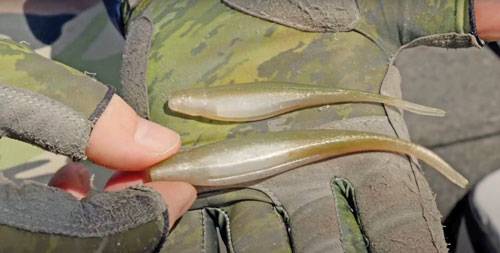
Jerk bait profiles are slender tapering baitfish profiles that have minimal built-in action and in turn reduced drag.
This allows them to cast long, even in windy conditions, and sink faster through the water column on a light jig head.
Jerk bait profiles glide down through the water column, representing a dying baitfish and then come to life with a few twitches and flicks of the rod tip.
They also have the versatility of being able to be retrieved at speed for pelagic species, when they’re encountered while chasing snapper.
My two go-to jerk bait profiles are the Z-Man 3.75” StreakZ and 4” Scented Jerk ShadZ.
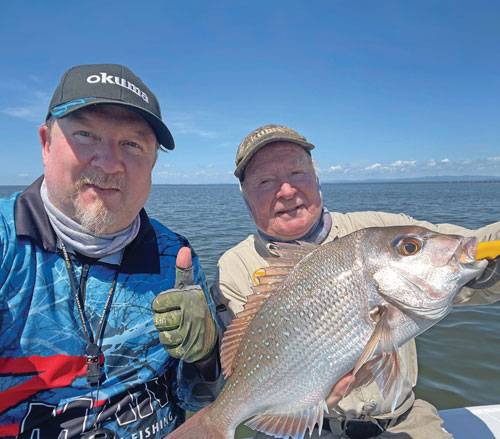
The latter is perfect for when you want more bulk and presence in the water to match larger bait, while the 3.75” StreakZ is the ultimate small bait imitation.
A 2/0 TT HeadlockZ HD is perfect in the StreakZ, with a 3/0 or 4/0 the go in the larger 4” Scented Jerk ShadZ.
When rigging plastics for snapper, it’s often about selecting the lightest jig head you can get away with, to present the plastic on a slow natural fall, giving the snapper plenty of time to locate it on the sink, while also reducing snags around structure.
Retrieve techniques
When the current is flowing more heavily, the fish will often hold tight to structure out of the flow, so when holding position, your casts need to be made to bring the plastic back into the strike zone.
If you miss the zone, you are less likely to get a bite and, if you do get a bite during this stage of the tide, you need to be prepared to wrestle the fish away from cover.
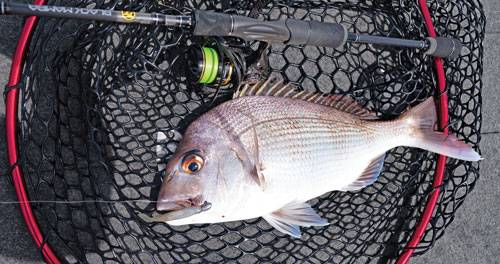
As the flow decreases, the fish will spread out and hunt away from the structure, and the reduced flow allows you to fan your casts around, covering more water rather than concentrating as much on the key structure.
Where possible, I like to bring the plastic back naturally with the flow when holding position, either directly or across current, targeting fish that are feeding around and over the structure.
As mentioned previously, when holding position, generally we simply make a long cast upcurrent and allow the plastic to free fall to the bottom, while keeping the bulk of the slack out of the line to detect any bites.
From there it’s a matter of mixing up the retrieve, hopping, twitching and pausing the plastic on the bottom, or near the bottom in extremely snaggy areas.
If not holding position with the electric motor or anchoring, another option is to drift and fish the structure.
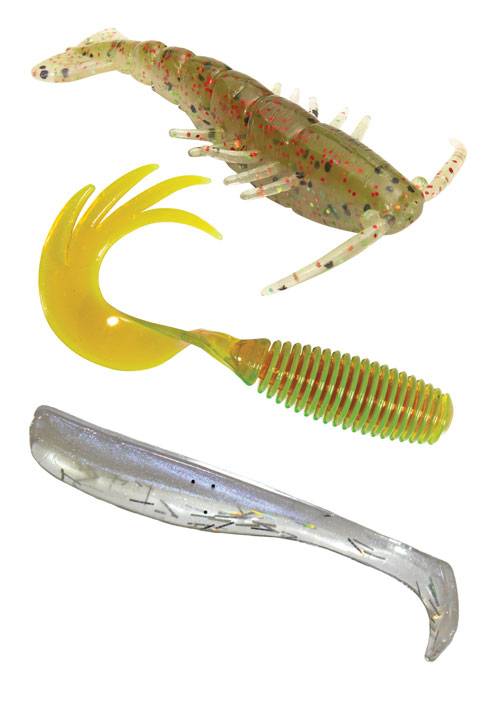
When drifting, the retrieve is similar, however we will generally cast ahead of the drift – which could be a drift that is driven by the wind or tide – and fish our way to the plastic, while still allowing it to fall naturally to the bottom before commencing a twitch, hop and pause retrieve.
Additional tips
It’s important to keep the noise to a minimum, especially when fishing shallower reef and rubble.
We generally prefer to stop the motor away from the structure and then use the electric motor or a drift to carry us over to it.
Noise will transfer through the boat hull and spook the fish also, so try to keep the banging about to a minimum.
Scent is another important element when fishing soft plastics, especially when fish are picking them up on the drop and we want them to hold on long enough for us to set the hook.
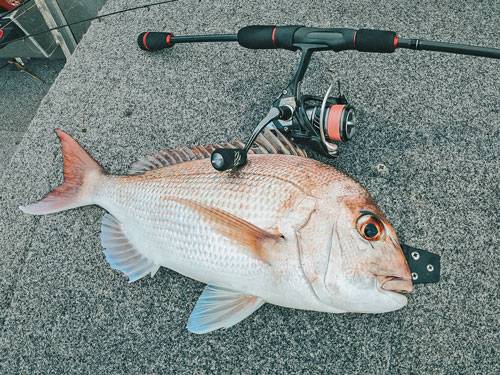
My go-to scent for targeting snapper is Pro-Cure Super Gel in Mullet or Sardine/Pilchard flavour.
I will apply a small amount and smear it over the soft plastic every 30 or so casts.
It’s time to investigate the snapper options available in your local waterways and gear up for a hot winter bite.
Hopefully, the tips and techniques included here will help you get connected to your first snapper or a new personal best trophy fish.
See you on the water…
 Bush 'n Beach Fishing Magazine Location reports & tips for fishing, boating, camping, kayaking, 4WDing in Queensland and Northern NSW
Bush 'n Beach Fishing Magazine Location reports & tips for fishing, boating, camping, kayaking, 4WDing in Queensland and Northern NSW
